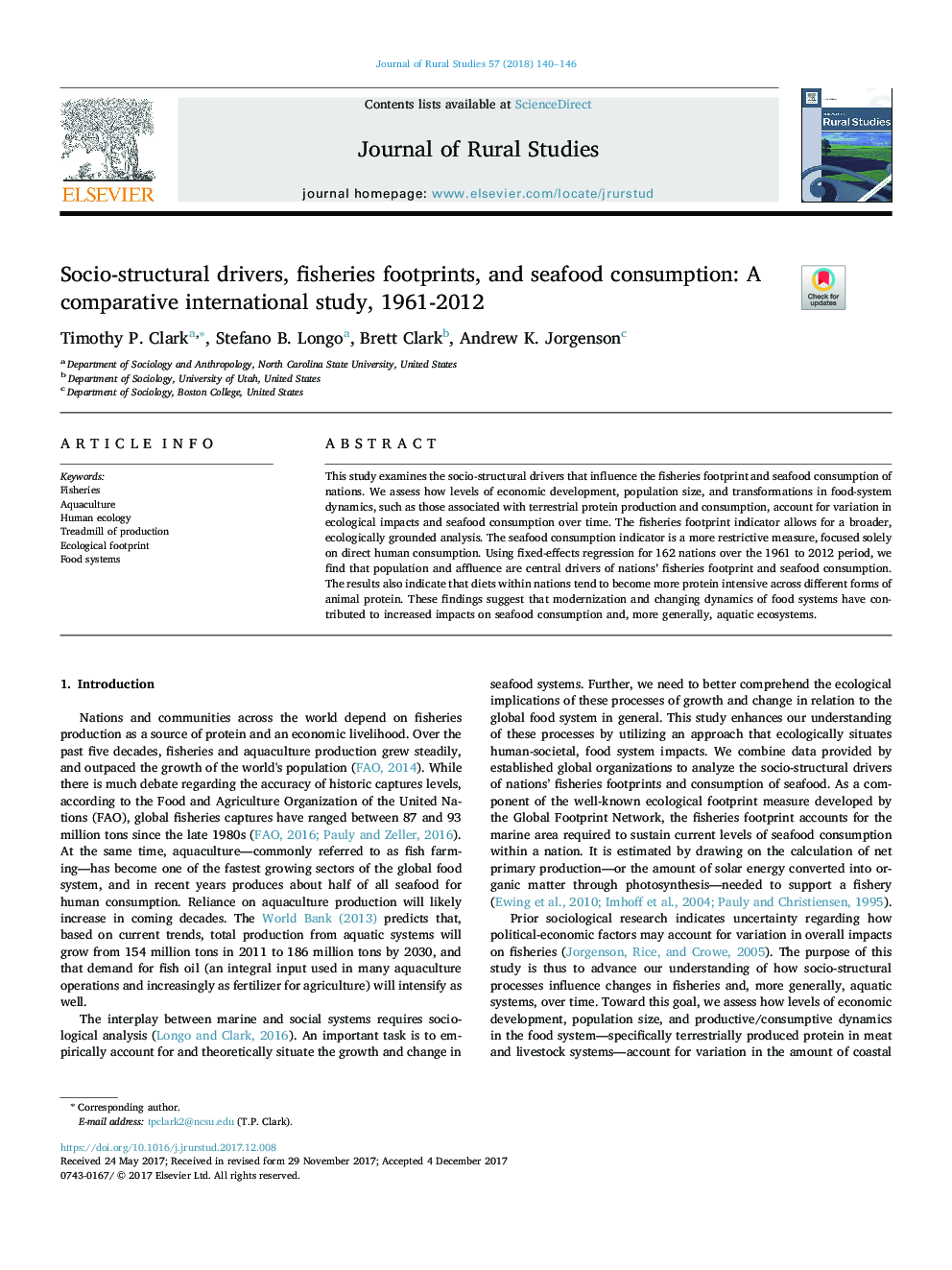| Article ID | Journal | Published Year | Pages | File Type |
|---|---|---|---|---|
| 6545364 | Journal of Rural Studies | 2018 | 7 Pages |
Abstract
This study examines the socio-structural drivers that influence the fisheries footprint and seafood consumption of nations. We assess how levels of economic development, population size, and transformations in food-system dynamics, such as those associated with terrestrial protein production and consumption, account for variation in ecological impacts and seafood consumption over time. The fisheries footprint indicator allows for a broader, ecologically grounded analysis. The seafood consumption indicator is a more restrictive measure, focused solely on direct human consumption. Using fixed-effects regression for 162 nations over the 1961 to 2012 period, we find that population and affluence are central drivers of nations' fisheries footprint and seafood consumption. The results also indicate that diets within nations tend to become more protein intensive across different forms of animal protein. These findings suggest that modernization and changing dynamics of food systems have contributed to increased impacts on seafood consumption and, more generally, aquatic ecosystems.
Related Topics
Life Sciences
Agricultural and Biological Sciences
Forestry
Authors
Timothy P. Clark, Stefano B. Longo, Brett Clark, Andrew K. Jorgenson,
